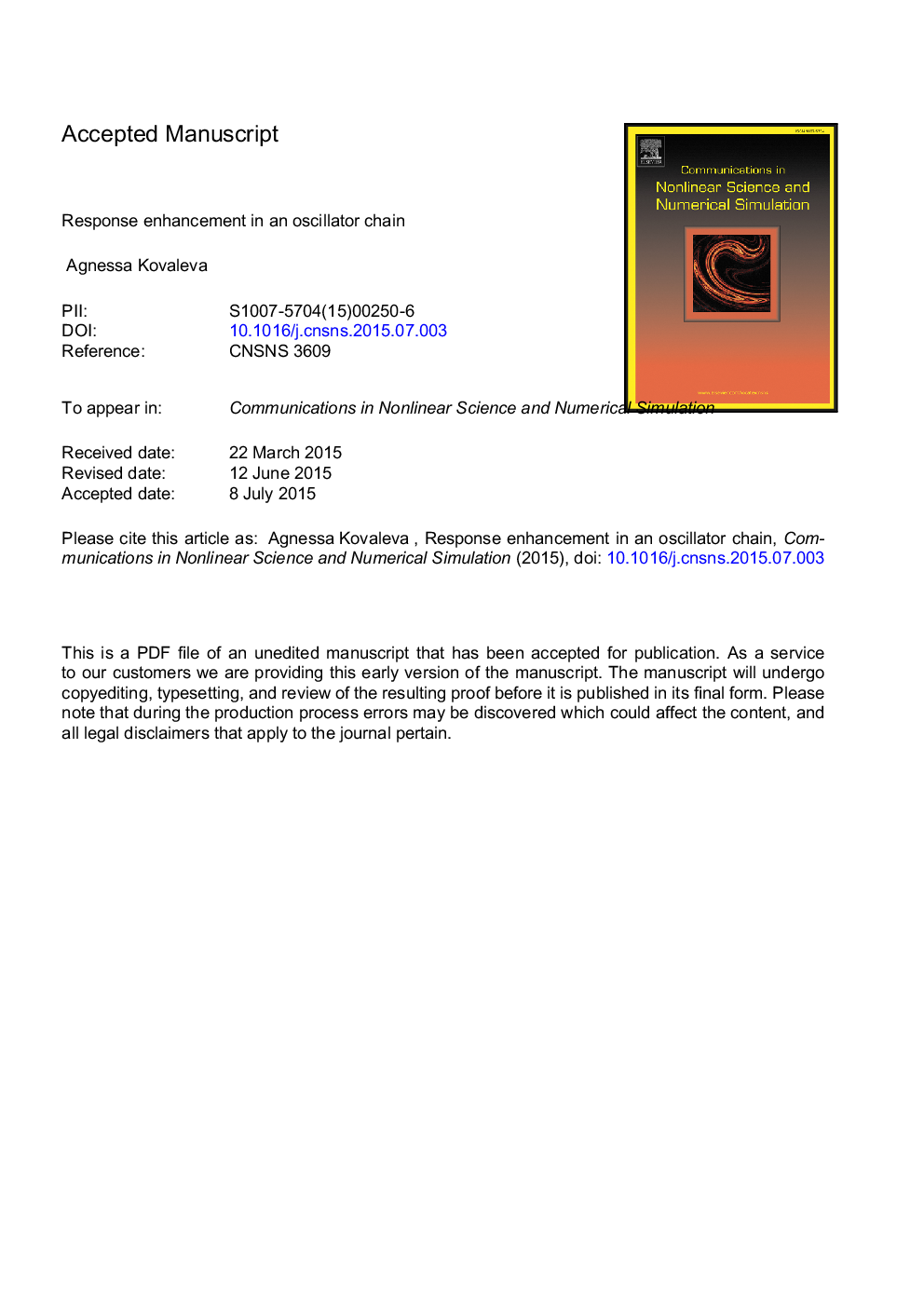| Article ID | Journal | Published Year | Pages | File Type |
|---|---|---|---|---|
| 7155297 | Communications in Nonlinear Science and Numerical Simulation | 2016 | 30 Pages |
Abstract
This paper investigates the emergence of autoresonance (AR) oscillations with permanently growing energy in a chain of time-invariant linear oscillators weakly coupled to a nonlinear actuator (the Duffing oscillator) driven by an external force. Two types of forcing are studied: (1) harmonic forcing with constant frequency is applied to the actuator with slowly-varying parameters; (2) harmonic forcing with a slowly increasing frequency is applied to the nonlinear actuator with constant parameters. In both cases, the linear chain is time-invariant, and the system is initially engaged in resonance. It has been proved in earlier works that a slow increase of the forcing frequency or an equivalent decrease of stiffness play a similar role in the emergence of AR in a single Duffing oscillator. This paper shows that in the system of the first type AR the nonlinear oscillator generates oscillations with growing amplitudes in the chain, but in the system of the second type energy transfer from the nonlinear oscillator is insufficient to excite high-energy motion in the attachment. The difference in the dynamical behavior is explained by different resonance properties of the systems. It is also shown that a slow change of stiffness may enhance the response of the nonlinear oscillator and make it sufficient to support oscillations with growing energy in the linear attachment even beyond the linear resonance. Explicit asymptotic approximations of the solutions are obtained. Close proximity of the derived approximations to exact (numerical) results is demonstrated.
Related Topics
Physical Sciences and Engineering
Engineering
Mechanical Engineering
Authors
Agnessa Kovaleva,
